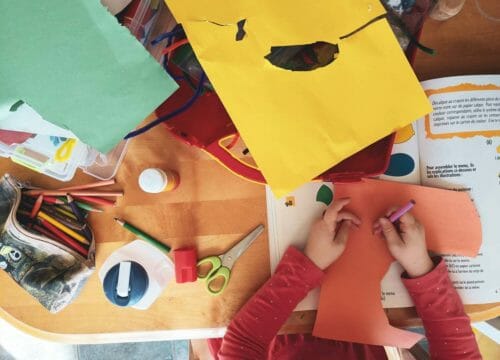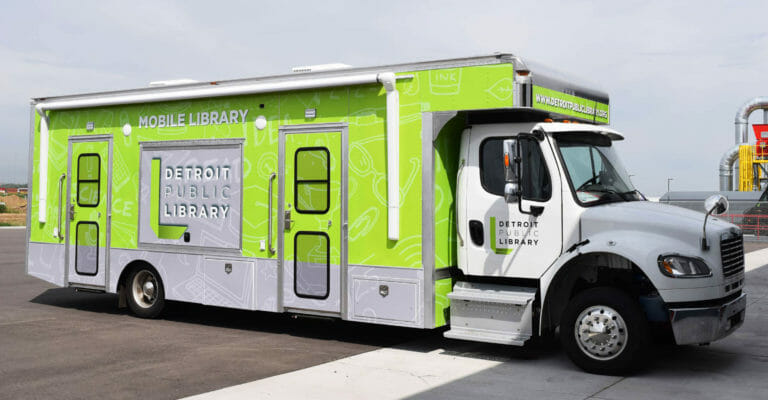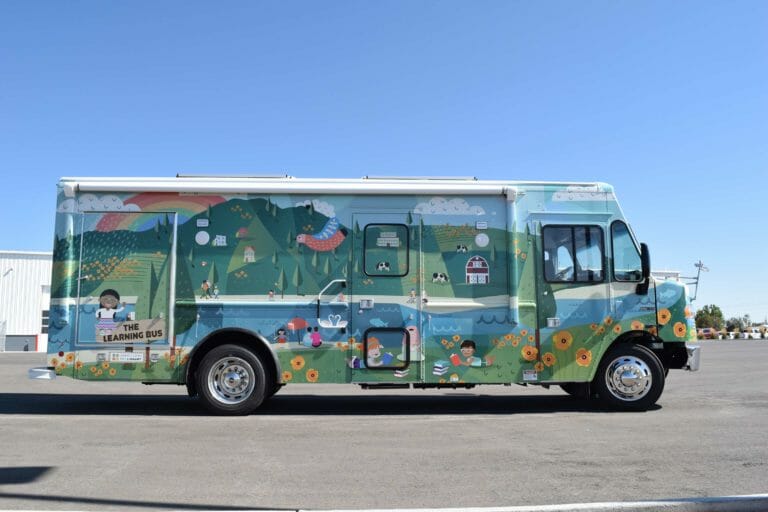Community Outreach
How to Create a Makerspace in Your Bookmobile
July 12, 2021

Bookmobiles provide libraries an outstanding opportunity for reaching patrons across the community. These mobile libraries can make it easier for people to access information, books, and educational resources, even when they cannot make it to a physical library location.
In addition to being a mobile library, bookmobiles are also the ideal method for hosting other library activities and for providing additional services to underserved communities.
Today, we’ll take a look at how a bookmobile can be used as a makerspace and what it takes to turn any bookmobile into this versatile workspace.
What Is a Makerspace?
A makerspace is a specialized portion of a library that is dedicated to helping patrons create intellectual and/or physical materials.
This library service allows community members to use technology and participate in activities that they might not normally have access to due to the high costs associated with equipment, software, or materials.
Often a makerspace includes technology and specialized equipment, such as 3D printers, sewing machines, soldering equipment, coding software, audio and video capture tools, and editing software.
The goal is to create a space where anyone in the community can try out new interests a variety of fields including science, technology, and design, regardless of their level of disposable income.
In many cases, libraries use makerspaces to specifically reach out to underrepresented populations in science, technology, engineering, and math (STEM) practices. These spaces not only encourage community collaboration, but also allow libraries to host classes and workshops to further the education of both adults and children.
Creating a Makerspace in Your Bookmobile
Creating a makerspace in your bookmobile will provide the opportunity of reaching entirely new segments of your community with valuable tools and technologies and it all starts with the customization of the space.
The following steps can help you as you fine-tune your bookmobile’s makerspace.
1. Pick a Focus for the Space
In many cases, a makerspace will focus on a specific skill or technology. For a bookmobile, picking a focus for the space can help make the most of the available area.
Consider a few of the following ideas as you determine what will best serve your community:
- Computer programming and coding: With the rise in vocations that require coding and programming skills, many people — young and old alike — are interested in learning these valuable skills. Consider adding in a computer lab with the necessary software and learning courses to help patrons develop this expertise.
- 3D modeling and printing: Today, an increasing number of items can be designed through 3D modeling and printing. A makerspace can allow patrons to practice their design skills utilizing shared printing equipment. This makes it easier for people interested in this line of design to test out their skills without requiring the purchase of specialized equipment.
- Video and audio editing: In order to practice video and audio editing skills, specific software is required. Often, this software is too costly for individuals to afford. By creating a computer lab equipped with shared licenses, patrons can work on developing these valuable skills without the high upfront cost. Similar to a coding focus, this mobile computer lab can also be used to provide community courses on video and audio editing.
- Traditional arts and crafts: In many cases, a makerspace features a tactile focus. Sewing, crafting, and art equipment can be provided to patrons to create a hands-on experience. In addition, a mobile makerspace focused on the arts and crafts can be the perfect way to reach children in underserved communities.
Ultimately, a makerspace can be anything you imagine. Not only that, but it can evolve over time, being utilized for multiple focuses over the years.
2. Create a List of Necessary Equipment
Depending on the focus of your makerspace, you will need to invest in the right equipment for the bookmobile. In the case of technology-focused spaces, it will be important to design a computer lab area.
For more tactile uses, it will be important to focus on ample storage and room for specialized equipment.
Take the time to create a detailed list of required equipment to ensure that your custom builder designs a layout that will incorporate everything necessary in an intuitive layout.
3. Work with a Custom Builder
The best way to design a makerspace in your bookmobile is to work with a custom builder. A custom builder can help you create the perfect layout for your needs.
When working with a custom builder, make sure to start by outlining the purpose of the space. If you are focusing on technology, you will need to ensure that ample power is available for a computer lab and that the area is equipped with adequate seating and desk space.
If you plan to create a makerspace focused on arts and crafts, you’ll need to ensure that your custom builder equips the area with plenty of storage options.
Finally, a custom builder can help you create your build on a durable chassis that will be reliable. This will allow your team to focus on serving the community, not on dealing with breakdowns along the way.
Talk to Summit Bodyworks about Your Bookmobile Customization
If you are interested in creating a custom bookmobile with a makerspace for your community, talk to the team at Summit Bodyworks. We can help you design a bookmobile that will serve patrons across your community, offering your team mobility and flexibility in their work.
Recently, we helped the Fountaindale Public Library District design their bookmobile on a Freightliner M2 chassis. This bookmobile has made it possible for the library to provide their services to patrons across the region.
Want to learn more about our work? If so, we invite you to reach out to our team today. We will be happy to discuss your specific needs and determine what build will be best for you.


